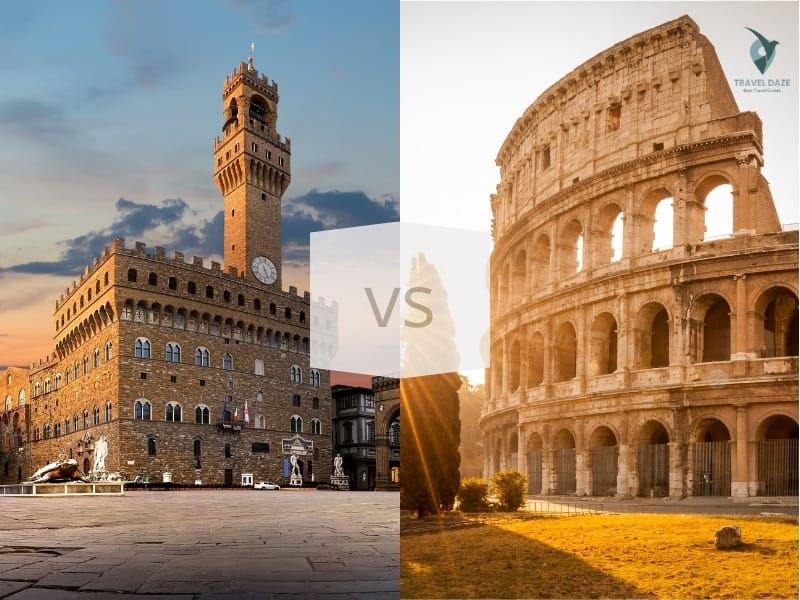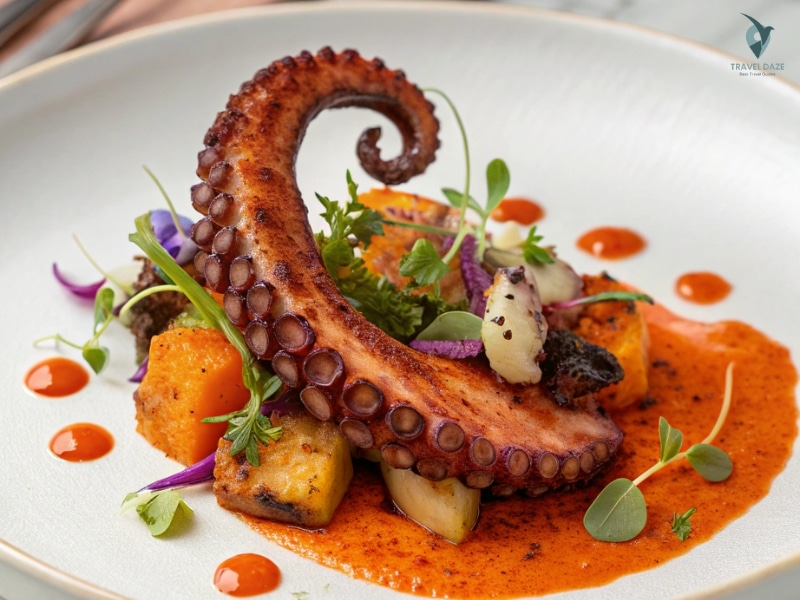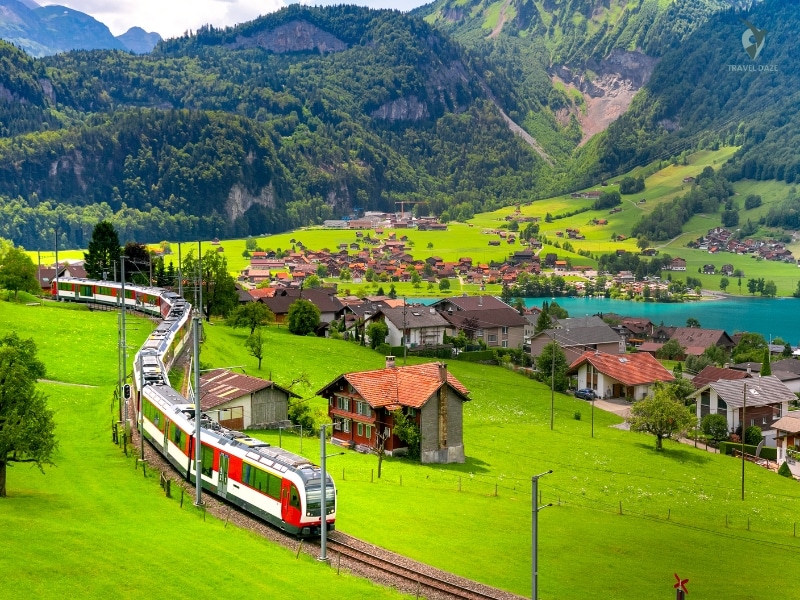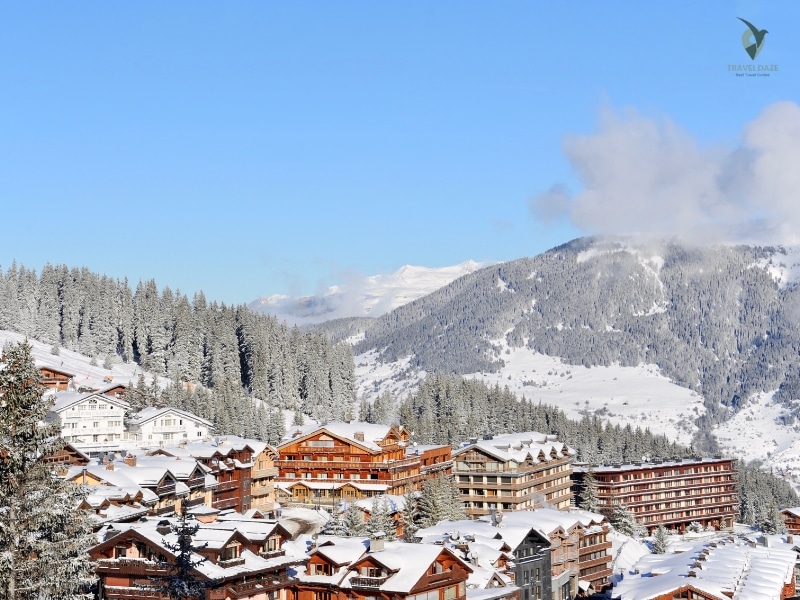Ever wondered which Italian city offers the perfect blend of art, history, and vibrant local life? Both places are iconic, but they each have their own unique charm. Whether you’re drawn to ancient ruins or Renaissance masterpieces, this guide will help you decide which destination fits your travel style.
Table of Contents
ToggleFirst, imagine strolling through streets filled with centuries-old architecture. One city is known for its Roman landmarks, while the other is a treasure trove of Renaissance art. Both offer unforgettable experiences, from world-class museums to cozy local restaurants.
Next, think about what excites you most. Are you into exploring ancient history or discovering hidden galleries? Maybe you’re all about savoring authentic Italian cuisine. This comparison will dive into the highlights of each place, helping you plan the perfect trip.
Finally, get ready to explore. Whether you’re planning a quick day tour or a longer stay, this guide will show you the best of both worlds. Let’s uncover the magic of these two incredible cities together!
Discovering the Heart of Rome and Florence
Stepping into the heart of these Italian gems feels like entering two different worlds. One city pulses with ancient grandeur, while the other hums with artistic brilliance. Each has its own rhythm, and exploring them is like uncovering layers of history and culture.
In one, you’ll find streets lined with Roman ruins that whisper tales of an empire. In the other, Renaissance masterpieces adorn every corner, telling stories of artistic genius. Both cities are alive with a mix of old and new, where history meets modern life seamlessly.
Walking through Florence feels like strolling through an open-air museum. Its compact size makes it easy to explore on foot, with surprises waiting around every corner. Rome, on the other hand, is vast and sprawling, inviting you to wander its neighborhoods and discover hidden treasures.
Here’s what makes each city special:
- Florence: The Duomo stands tall, a symbol of the city’s artistic soul. Its streets are filled with galleries, markets, and cozy cafes.
- Rome: The Vatican is a must-see, a testament to the city’s rich history. Its ancient ruins and vibrant piazzas create a unique atmosphere.
Both cities offer a blend of history and modernity, making them perfect for any traveler. Whether you’re drawn to art, history, or simply soaking in the local vibe, these hearts of Italy won’t disappoint.
Historical Tapestry of Rome and Florence
Every corner of these destinations tells a story of its past. From ancient ruins to Renaissance masterpieces, the history here is alive and waiting to be explored. Each city offers a unique glimpse into its cultural heritage, making it a dream for history lovers.
Ancient Rome and Its Ruins
Walking through the streets of Rome feels like stepping back in time. The Colosseum stands as a testament to the grandeur of the Roman Empire. Every stone tells a story of gladiators, emperors, and ancient spectacles.
The Roman Forum is another must-see. It’s a sprawling site where politics, religion, and daily life once intertwined. I remember feeling awestruck as I imagined the bustling activity that once filled these ruins.
For a deeper dive, guided tours are invaluable. They reveal hidden details and bring the past to life. Whether it’s the Pantheon or the Baths of Caracalla, each site offers a window into Roman history.
Florence and the Renaissance Legacy
Florence, on the other hand, is a celebration of the Renaissance. The Duomo dominates the skyline, a masterpiece of architectural innovation. Its red dome is a symbol of the city’s artistic soul.
The Accademia Gallery is a treasure trove of art. Michelangelo’s David is the star here, a sculpture that captures the essence of human beauty and skill. Standing in front of it, I felt a deep connection to the artistic genius of the past.
The Uffizi Gallery is another highlight. It’s home to works by Botticelli, Leonardo, and Raphael. Each painting tells a story of creativity and cultural rebirth. Florence’s streets are like an open-air museum, where every corner holds a piece of history.

Both cities offer a rich historical experience, but in different ways. Rome’s ancient ruins speak of a classical past, while Florence’s art and architecture shine with Renaissance brilliance. Whether you’re exploring Roman sites or admiring Florentine masterpieces, the history here is unforgettable.
Iconic Landmarks and Must-See Sights
Italy’s iconic landmarks are more than just sights—they’re stories carved in stone and art. Each one offers a glimpse into the past, blending history and beauty in unforgettable ways. Whether you’re here for a quick day trip or a longer stay, these landmarks are a must-see.
The Colosseum and Trevi Fountain
Standing in front of the Colosseum, I felt the weight of history. This ancient amphitheater once held up to 80,000 spectators, roaring with the energy of gladiatorial battles. Walking through its arches, I imagined the crowds and the spectacle that once filled this space. It’s a reminder of the grandeur of the Roman Empire.
Just a short walk away, the Trevi Fountain is pure magic. Tossing a coin into its waters felt like a ritual, a promise to return. The fountain’s intricate sculptures and flowing water create a sense of wonder. It’s a place where history and myth come alive.
The Duomo and Uffizi Gallery
In Florence, the Duomo is impossible to miss. Its red dome dominates the skyline, a masterpiece of Renaissance architecture. Climbing to the top, I was rewarded with breathtaking views of the city. The Duomo is a symbol of artistic and engineering brilliance.
Nearby, the Uffizi Gallery is a treasure trove of art. Walking through its halls, I was awestruck by masterpieces from Botticelli, Leonardo, and Raphael. Each painting tells a story of creativity and cultural rebirth. The Uffizi is more than a museum—it’s a journey through the Renaissance.
These landmarks are more than just sights—they’re experiences. They connect you to centuries of history and art, making every minute of your trip unforgettable. Whether you’re a history buff or an art lover, these iconic spots are a reason to travel.
Art and Architecture: A Side-by-Side Comparison
The art and architecture of these Italian cities tell stories of two distinct eras. One city reflects the grandeur of ancient times, while the other shines with the brilliance of the Renaissance. Exploring both feels like stepping into different chapters of history.
Classic Masterpieces in the Eternal City
Walking through the streets of the Eternal City, I was struck by its timeless beauty. The Colosseum and Pantheon stand as symbols of classical art and engineering. Every stone seemed to whisper tales of an empire that shaped the world.
Guided tours here reveal hidden details in every monument. The intricate carvings and massive structures left me in awe. It’s a place where history feels alive, and the art speaks of a long, storied past.
Renaissance Artistry in the Heart of Tuscany
Florence, on the other hand, feels like an open-air museum. The Duomo, with Brunelleschi’s iconic dome, dominates the skyline. Climbing to the top, I marveled at the city’s artistic soul.
The Accademia Gallery houses Michelangelo’s David, a masterpiece that captures human beauty and skill. Standing in front of it, I felt a deep connection to the Renaissance spirit. Florence’s intimate streets are filled with art at every corner, making it a haven for creative minds.
- Classical art in one city contrasts with innovative Renaissance creations in the other.
- Architecture in one mirrors a long history, while the other feels intimate and artistic.
- Tours in both cities uncover hidden details in every stone and brushstroke.
Whether you’re drawn to ancient grandeur or Renaissance brilliance, these cities offer unforgettable artistic experiences. Every visit feels like a journey through time.
Immersive Cultural Experiences
Exploring the cultural heartbeat of Italy offers a mix of lively streets and serene moments. Whether it’s the bustling energy of one city or the quaint charm of another, every corner tells a story. From historic cafes to vibrant markets, these places are a feast for the senses.
Vibrant Street Life and Historic Cafes
Stepping into the streets of the Eternal City feels like entering a living museum. The piazzas are alive with chatter, street performers, and the aroma of fresh espresso. I loved sitting at a historic cafe near the Vatican, sipping coffee while soaking in the timeless atmosphere.
In contrast, Florence’s cobblestone streets offer a slower pace. Here, cafes are tucked into quiet corners, perfect for a relaxed break. I remember savoring a cappuccino at a local spot, watching the world go by. It’s these moments that make travel so special.
- Local restaurants in both cities serve up authentic flavors. From hearty pasta dishes to delicate pastries, every bite is a reason to celebrate Italian cuisine.
- Markets are a treasure trove of fresh produce, artisanal goods, and local crafts. Exploring them feels like a mini adventure.
- Hidden gems are easy to find. Whether it’s a small gallery or a quiet courtyard, these spots add depth to any trip.
The blend of modern energy and historical backdrops defines each city. One moment, you’re marveling at ancient ruins. The next, you’re enjoying a gelato in a lively square. It’s this balance that makes Italy unforgettable.
Navigating the Cities with Ease
Getting around Italy’s iconic cities is easier than you think, with each offering its own unique way to explore. Whether you’re hopping on a bus or strolling through cobblestone streets, both destinations make travel simple and enjoyable. Here’s how to navigate them like a pro.
Public Transit in the Eternal City
In the Eternal City, public transit is your best friend. The metro system, though limited, connects key spots like the Vatican and the Colosseum. Buses and trams fill in the gaps, making it easy to reach neighborhoods off the beaten path.

I found that planning my routes ahead of time saved me hours. Skip-the-line tickets for popular attractions are a must, especially during peak hours. Taxis are handy for late-night trips, but they can be pricey. Stick to public transit for a budget-friendly option.
Exploring the Heart of Tuscany on Foot
Florence, on the other hand, is a walker’s paradise. Its compact layout means you can explore most of the city on foot. I loved wandering through its cobblestone streets, stumbling upon hidden gems like the Accademia or the Duomo.
Walking here isn’t just convenient—it’s part of the charm. You’ll find local markets, cozy cafes, and stunning architecture around every corner. For longer distances, buses and trams are available, but I rarely needed them.
Here are a few tips to make your trip smoother:
- Use apps like Google Maps to plan your routes in advance.
- Wear comfortable shoes—you’ll be walking a lot.
- Visit popular sites early in the day to avoid crowds.
Whether you’re navigating by bus or on foot, both cities offer a seamless travel experience. With a little planning, you’ll make the most of your time and discover their unique charms.
Gastronomy and Local Culinary Delights
Italy’s culinary scene is a journey through flavors, history, and tradition. Every meal feels like a celebration, blending local ingredients with centuries-old recipes. Whether you’re savoring pasta in a cozy trattoria or sipping wine at a bustling market, the food here tells a story.
Roman Pasta and Gelato Treats
My first taste of Roman pasta was unforgettable. Dishes like cacio e pepe and carbonara are simple yet rich, showcasing the art of Italian cooking. I spent a day exploring local restaurants, each offering a unique twist on classic recipes. The trattorias in Trastevere are a must-visit for authentic flavors.
No trip to Italy is complete without gelato. I indulged in creamy scoops at artisanal shops, each flavor more delicious than the last. From classic pistachio to seasonal specialties, gelato is a sweet reason to wander the city streets.
Florentine Flavors and Food Markets
Florence’s food markets are a feast for the senses. I wandered through Mercato Centrale, sampling fresh produce and local cheeses. The aroma of freshly baked schiacciata filled the air, a seasonal treat made with grapes from the harvest.
One evening, I enjoyed a glass of Chianti at a wine bar, paired with crostini con fegatini. The combination of flavors was perfection. Florence’s cuisine is both rustic and refined, offering a taste of Tuscany’s rich culinary heritage.
- Roman pasta dishes are a must-try, with trattorias serving up classics like carbonara and cacio e pepe.
- Gelato shops are everywhere, offering a sweet escape from the city’s bustling streets.
- Florence’s markets are a treasure trove of fresh ingredients and local specialties.
- Wine bars in Florence provide the perfect setting to savor a glass of Chianti.
Food is a major reason to visit Italy. It’s not just about eating—it’s about experiencing the culture, history, and passion behind every dish. Whether you’re in Rome or Florence, each meal becomes a memorable part of your trip.
Day Trips and Surrounding Attractions
Exploring beyond the city limits opens up a world of hidden treasures and unforgettable adventures. Both Florence and Rome serve as perfect hubs for day trips, offering a chance to dive deeper into Italy’s rich culture and history. Whether you’re drawn to rolling hills or ancient ruins, these excursions add a new layer to your travel experience.
Tuscany Excursions from Florence
Florence is your gateway to the enchanting Tuscan countryside. Just a short drive away, you’ll find medieval towns like San Gimignano and Siena. These charming spots are filled with history, art, and stunning views. I loved wandering through Siena’s Piazza del Campo, a UNESCO World Heritage site that feels like stepping back in time.
For wine lovers, a trip to Chianti is a must. The vineyards here produce some of Italy’s finest wines. I joined a wine-tasting tour and savored every sip while learning about the region’s winemaking traditions. The rolling hills and quaint villages make Tuscany a reason to extend your stay.
Historic Escapes Near Rome
Rome’s surroundings are equally captivating. A quick train ride takes you to Ostia Antica, an ancient port city that rivals Pompeii in its historical significance. Walking through its ruins, I felt like I was uncovering a lost world. Another gem is Tivoli, home to Hadrian’s Villa and the stunning Villa d’Este. These sites are perfect for history buffs and anyone seeking a peaceful escape.
If you’re up for a longer trip, Pompeii is worth the journey. The preserved ruins offer a glimpse into life during the Roman Empire. I spent hours exploring the streets, houses, and theaters, amazed by the level of detail that has survived for centuries.
- Organized tours make planning day trips easy and stress-free.
- Timing is key—start early to make the most of your adventure.
- Both cities offer diverse experiences, from art and history to nature and cuisine.
Day trips are a fantastic way to enrich your travel experience. Whether you’re exploring the Tuscan hills or ancient Roman sites, these excursions promise unforgettable moments. Every minute spent beyond the city limits is a chance to discover something new and extraordinary.
Rome vs Florence: Key Differences and Choices
Choosing between these two Italian cities comes down to the pace and vibe that suits your travel style. Each offers a unique rhythm, shaping your experience in different ways. Whether you’re drawn to a bustling metropolis or a charming, intimate escape, understanding these differences can help you decide.
Travel Pace and City Vibe
One city pulses with vibrant energy, while the other hums with a slower, more relaxed atmosphere. The Eternal City feels like a whirlwind of activity, with its sprawling neighborhoods and endless attractions. Every corner buzzes with life, from historic landmarks to lively piazzas. It’s a place where time seems to fly, and there’s always something new to discover.
In contrast, Florence feels like a hidden gem. Its compact size makes it easy to explore on foot, with surprises waiting around every corner. The pace here is slower, inviting you to linger over a cappuccino or wander through quiet streets. It’s a city that feels intimate, where you can truly soak in its artistic and historical charm.
- The Eternal City offers endless options, from ancient ruins to modern cafes. Its sheer size can feel overwhelming, but it’s perfect for those who love variety.
- Florence’s concentrated charm makes it ideal for leisurely strolls. Its walkable streets and artistic treasures create a sense of calm.
- Historical layers influence the vibe in each city. One feels grand and monumental, while the other feels personal and creative.
Ultimately, your choice depends on what excites you most. Do you thrive in a fast-paced environment, or do you prefer a slower, more intimate experience? Both cities offer unforgettable moments, but their differences make each one unique.
Which Italian City to Visit Would Be Best for a February Trip?
For a February trip, consider Florence as it boasts a rich blend of art, culture, and gastronomy. With fewer crowds and pleasant weather, it’s one of the top destinations for february in Italy. Explore the breathtaking Uffizi Gallery, savor Tuscan cuisine, and stroll along the Arno River for an unforgettable experience.
Conclusion
Deciding between these two iconic Italian destinations is like choosing between two masterpieces—each has its own unique charm. Whether you’re drawn to the bustling energy of one city or the intimate beauty of the other, both offer unforgettable experiences. From the Colosseum to the Duomo, the art and history here are unmatched.
For me, the vibrant streets and endless attractions of one city made every day feel like an adventure. In contrast, the slower pace and artistic soul of the other offered a chance to truly connect with its culture. Both cities left me with memories I’ll cherish forever.
When planning your trip, think about what excites you most. Do you want a fast-paced journey filled with landmarks, or a relaxed escape centered on art and food? Either way, you can’t go wrong. These cities are timeless for a reason, and they’re waiting to be explored.





